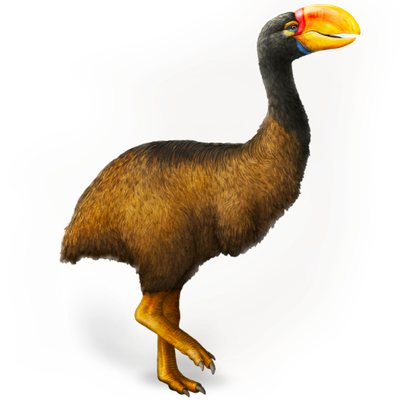Your search returned 12454 results
By Page Type
By Tag
- fish (966)
- blog (696)
- fishes of sydney harbour (401)
- First Nations (299)
- Blog (236)
- AMRI (169)
- archives (164)
- Eureka Prizes (146)
- Aboriginal and Torres Strait Islander (135)
- insect (126)
- Ichthyology (124)
- geoscience (109)
- minerals (102)
- climate change (100)
- podcast (94)
- Fish (91)
- Anthropology (89)
- International collections (80)
- Minerals Gallery (78)
- wildlife of sydney (78)
- Labridae (77)
- frog (74)
- gemstone (70)
- history (64)
- photography (64)
- Mollusca (60)
- gem (59)
- staff (59)
- Birds (56)
- Gems (56)
- Indonesia (56)
- education (56)
- shark (55)
- AMplify (54)
- people (53)
- earth sciences (50)
- past exhibitions (50)
- exhibition (49)
- Gobiidae (48)
- sustainability (46)
- Pomacentridae (45)
- Serranidae (44)
- lifelong learning (42)
- science (42)
- Earth and Environmental Science (41)
- Syngnathidae (41)
- Ancient Egypt (40)
- Bali (40)
- bird (40)
- dangerous australians (40)
-
Live at the AM: HumanNature Series 2019 - Katherine Gibson and Juan Francisco Salazar
https://australian.museum/learn/news/blog/humannature-katherine-gibson-juan-salazar/Lessons on resilience from a bamboo bridge Katherine Gibson and Juan Francisco Salazar (Western Sydney University) explore life within the rhythms of nature in resilient community economies.
-
Live at the AM: HumanNature Series 2019 - Mark Carey
https://australian.museum/learn/news/blog/human-nature-mark-carey-oct2019/The culture and politics of ice. University of Oregon’s Mark Carey explores the fundamental role of glacial ice in global economics and politics, and within imaginative, historical and colonial narratives.
-
Is AI a threat to Citizen Science?
https://australian.museum/learn/news/blog/ai-and-citizen-science/What are the current applications of Artificial Intelligence (AI) in citizen science? What opportunities and risks are involved?
-
Podcast - Lunchtime Conversation Series: Francheska Cubillo on Albert Namatjira (with Tracey Holmes)
https://australian.museum/learn/news/blog/lunchtime-lecture-cubillo-on-namitjira-2019/Francheska Cubillo, Churchill Scholar and Senior Curator Aboriginal & Torres Strait Islander Art at the National Gallery of Australia, explores the life and work of iconic artist Albert Namatjira
-
Kwaio and AM researchers jointly publish survey results from Malaita, Solomon Islands
https://australian.museum/learn/news/blog/kwaio_researchers_bird_survey_malaita/The publication of two scientific papers by Kwaio and AM scientists brings the 2018 ornithological expedition to completion. Their research showcases Malaita’s unique bird fauna, including the island’s first record of the elusive Solomons Nightjar!
-
Silent nights: frogs, drought and fire
https://australian.museum/learn/news/blog/frogs_drought_and_fire/It’s now more important than ever to monitor Australia’s frogs.
-
The end of a decade: AMRI highlights
https://australian.museum/learn/news/blog/end-of-a-decade-amri/We have accomplished a lot here at the Australian Museum Research Institute. And what better way to celebrate the end of a decade, and the start of a new one, than recount some of our highlights! Have a look at some of our discoveries, achievements and collaborations.
-
The spaghetti project in France: rewriting a classical polychaete tome
https://australian.museum/learn/news/blog/spaghetti-project-france-rewriting-classical-polychaete-tome/Read how a spaghetti project, named after the buccal tentacles of the seaworm, has led to the description of nine new species of Trichobranchids. Pat Hutchings and Nicolas Lavesque discuss their findings and how this is rewriting the classical polychaete (seaworm) story.
-
Pint-sized perfect: ‘Brenner’s Bobtail’
https://australian.museum/learn/news/blog/pint-sized-perfect-brenners-bobtail/Not all cephalopods have the profile of the Giant ‘kraken’ but this newly discovered bobtail squid packs a punch. Read about how a new species of squid was discovered in the Okinawa and Yaeyama Islands of the Ryukyu archipelago.
-
How (not) to name a snail
https://australian.museum/learn/news/blog/how-not-to-name-a-snail/Taxonomists strive to bring order to the chaos we call the diversity of life by naming species and sorting them into higher taxa, like genera and families. Needless to say that this undertaking comes with its own problems.
-
Discover more
2025 Australian Geographic Nature Photographer of the Year
Special exhibition
Free entry
Now open -
Discover more
Unfinished Business
Special exhibition
Free entry
Now open -
Find out more
Surviving Australia
Permanent exhibition
Free entry
Now open![]()
-
Find out more
Burra
Permanent kids learning space
Free entry
10am - 4.30pm![]()
-
Discover more
Minerals
Permanent exhibition
Free entry
Open daily![]()





